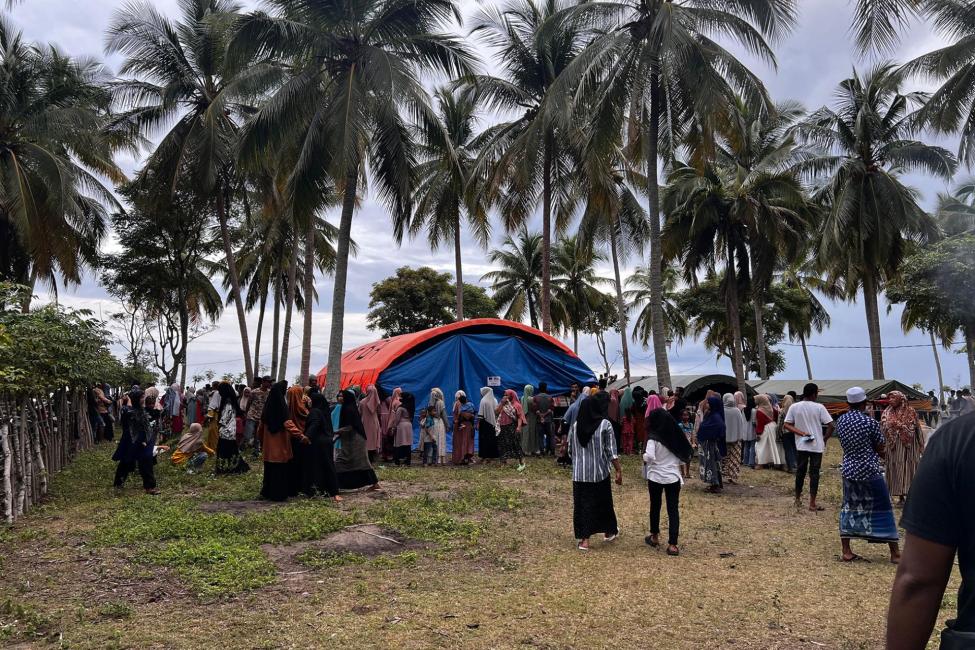-
Who we are
WHO WE AREThe International Organization for Migration (IOM) is part of the United Nations System as the leading inter-governmental organization promoting since 1951 humane and orderly migration for the benefit of all, with 175 member states and a presence in over 100 countries. IOM joined the United Nations system in September 2016.
About
About
IOM Global
IOM Global
-
Our Work
Our WorkAs the leading inter-governmental organization promoting humane and orderly migration, IOM plays a key role to support the achievement of the 2030 Agenda through different areas of intervention that connect both humanitarian assistance and sustainable development.
Cross-cutting (Global)
Cross-cutting (Global)
- Data and Resources
- Take Action
- 2030 Agenda
IOM at UN: Renewed Focus on Fighting Human Trafficking

The 72nd session of the UN General Assembly (UNGA) opened on 19 September in New York. It marked the first General Assembly presided by Antonio Guterres, the new UN Secretary General (SG), and it was also a step forward in the global fight against human trafficking.
The adopted first draft resolution of the UNGA was a Political Declarationreaffirming countries’ commitment to the implementation of the United Nations Global Plan of Action (GPA) to Combat Trafficking in Persons. At the High-level meeting held from 27 September to 2 October, 98 Member States, including 10 Ministers and seven Vice Ministers, recommitted to address human trafficking. New funding commitments to the Voluntary Trust fund were made and new partnerships announced. IOM was mentioned 17 times, and we were also given a chance to make a statement on the issue (webcast).
The SG has put the issue of migration and refugees high on the political agenda of the UN. In a heartfelt address, he opened with a strong speech about the need for the international community to step up and do better in the fight against human trafficking. Likewise, during the opening of the GA the week before he stressed that migration and refugees are one of the seven key themes that the global community needs to address. What we have seen during the GA and also the high-level meeting is the recognition that we need to strengthen our efforts to address trafficking in a comprehensive manner, looking beyond criminal justice response to address the root causes, and ensuring that the Global Compact for Safe, Orderly and Regular Migrationadequately addresses this issue going forward.
 SG Guterres addresses the High-level meeting of the General Assembly. Photo: Cia Pak/UN 2017
SG Guterres addresses the High-level meeting of the General Assembly. Photo: Cia Pak/UN 2017
Since the last review of the GPA in 2013, there has been more attention to emerging human trafficking trends, such as trafficking in conflict and situations of natural disaster, the need to work with the private sector to eradicate trafficking from global supply chains, and the specific vulnerability of migrants and refugees to human trafficking. Our office — together with our partners within the Inter-agency Coordinating group Against Trafficking in Persons (ICAT) — called on Member States to include these issues in the political declaration as well as in their national statements.
IOM Office to the United Nations has been working with diplomatic missions here to keep this issue high on the UN agenda and ensure the work IOM has been doing fighting human trafficking for over 20 years is reflected. At the high-level meeting, IOM summoned participants, often during the morning, lunch, and evening breaks to explain our approach, and attended over 10 side events linked to trafficking. IOM specialists participated in several panels at these events, and we were able to raise some examples of the great work of our colleagues in the field. One such example was the launch of the IOM-UNICEF report on Harrowing Journeys, launched on 27 September. Another example was having William Lacy Swing, IOM Director General, participate in the 19 September New York launch of the new Global Estimates of Forced Labour and Forced Marriage, which were produced by the ILO and the Walk Free Foundation, in partnership with IOM.
As we approach the negotiations on the Global Compact on Refugees and Global Compact for Migration, we can expect a growing focus on human trafficking, as well as busy months ahead.
Kieran Gorman-Best is a Senior Policy and Liaison Officer based in the IOM office to the United Nations, in New York.

